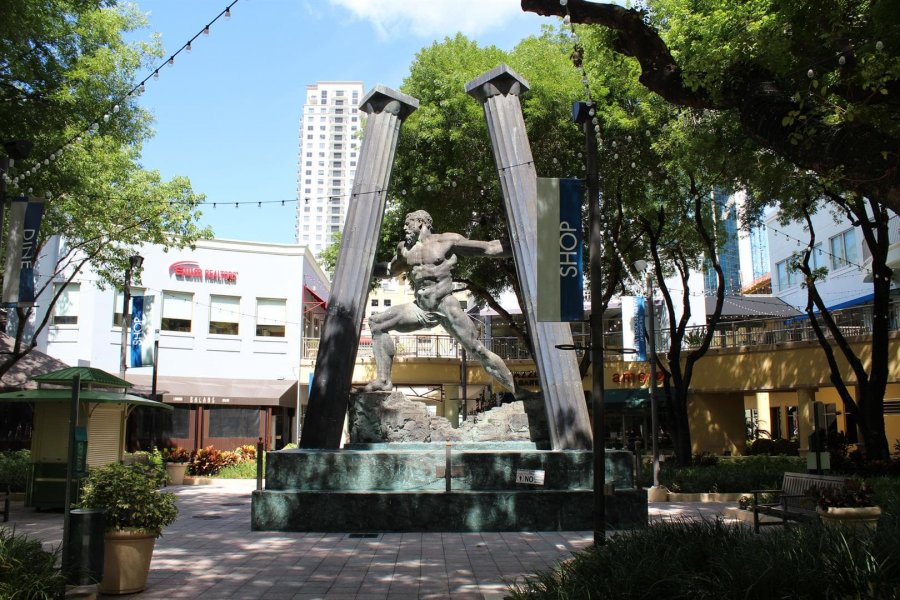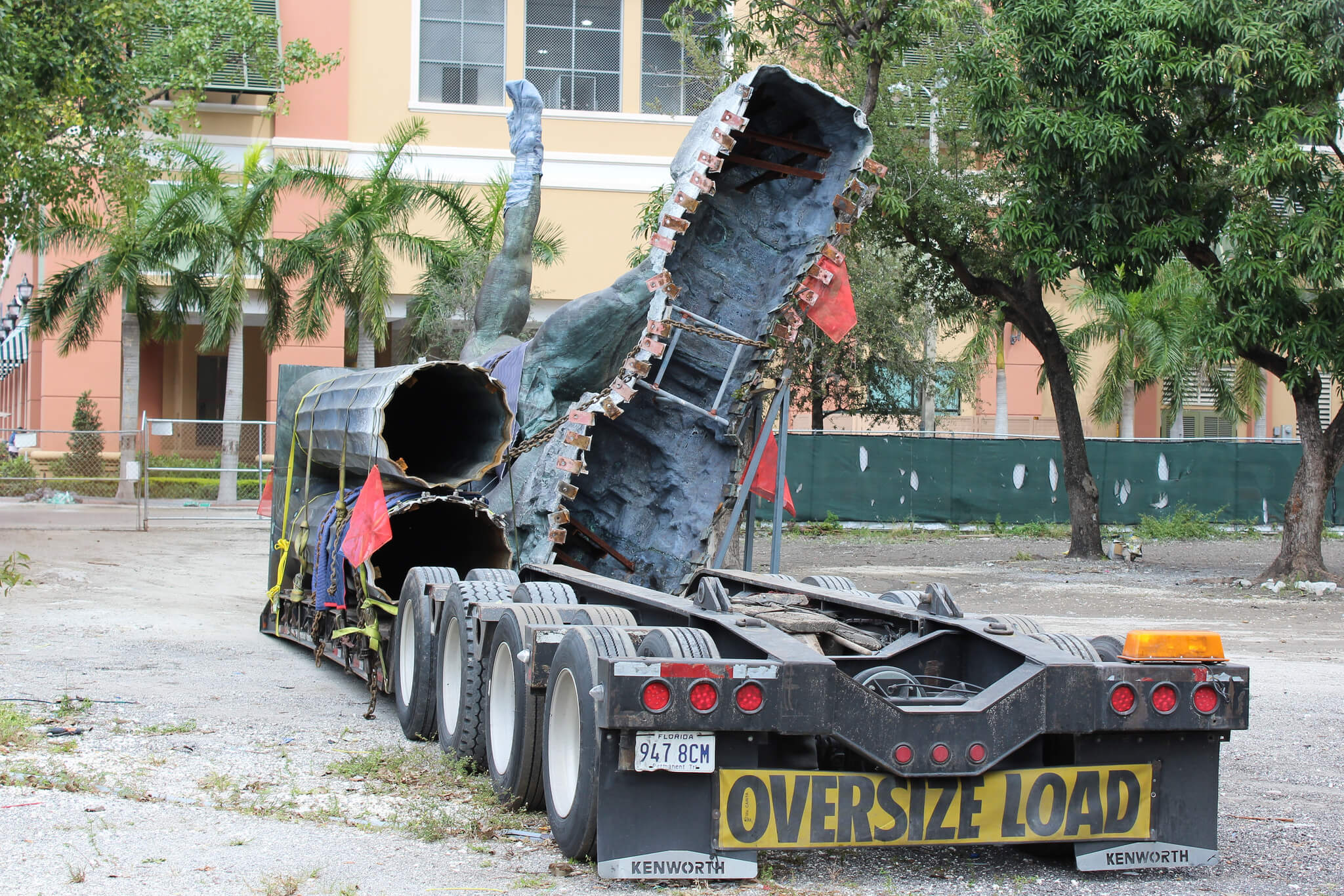Artist Ginés Serrán’s monumental Union of the World, which at its 2010 installation was allegedly (according to a press release) the world’s largest bronze sculpture, was removed from its site at the front of Mary Brickell Village last week. So, what happened to the 26 foot tall, 17,600 pound hunk of bronze?
Artist Ginés Serrán’s monumental Union of the World, which at its 2010 installation was allegedly (according to a press release) the world’s largest bronze sculpture, was removed from its site at the front of Mary Brickell Village last week. So, what happened to the 26 foot tall, 17,600 pound hunk of bronze?
According to an email which Cecilia Kawiorski, Mary Brickell Village’s Marketing Coordinator, sent to The Next Miami:
The statue was not demolished but has been relocated. The artist, Ginés Serrán, was kind enough to give us the honor in displaying his statue for the past 5+ years at MBV; however, a decision was made to relocate the statue (we do not know yet the new location) and thus it has been removed. Rest assured that the statue is intact.
It has always been a mutual agreement that the statue exhibition at MBV was temporary. As mentioned, the statue has been at MBV for the past 5+ years and now the artist have found a new display location thus it has been relocated. The artist indicated it will be somewhere in the Tampa region; however, we do not have information on the exact location.
Interestingly, according to a 2010 press release also published by TNM which stated “Miami is to become its permanent home,” that may not always have been the case. This is how that press release described the meaning behind the artistic work:
To create his monument for peace, he was inspired by the legend of Hercules. Born in the city of Ceuta, Spain, which according to the myth was one of the two Pillars, instead of separating the Columns of the World, Serrán sculpted the hero uniting them. The sculpture symbolizes the union of the Hellenic and Latino cultures with the history of the United States as well as the cultural ties of Europe with America. This sculpture is also connected to the history of the United States through the origin of the US dollar. The two vertical lines of the US dollar sign ($) are the two Pillars of Hercules.

Photo by Phillip Pessar

Photo by Phillip Pessar



